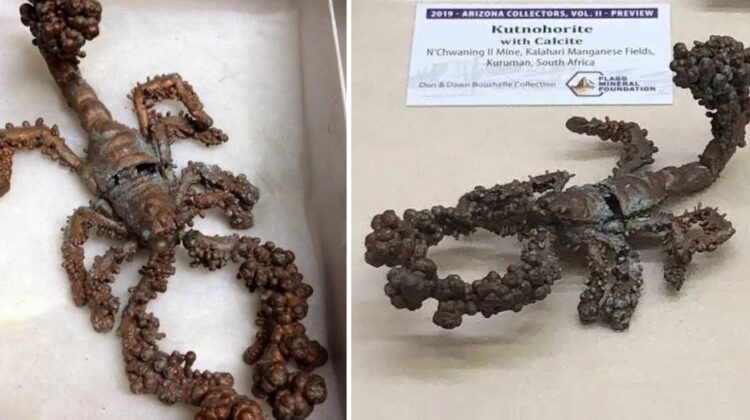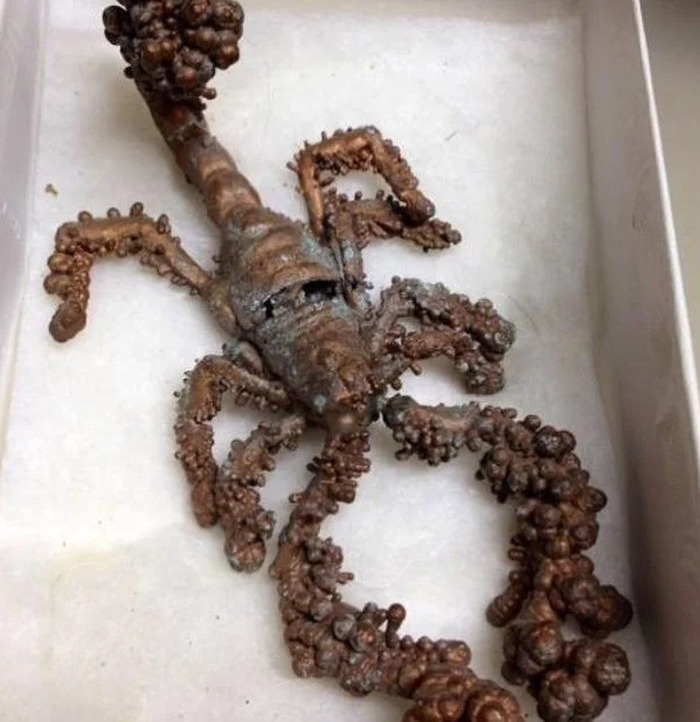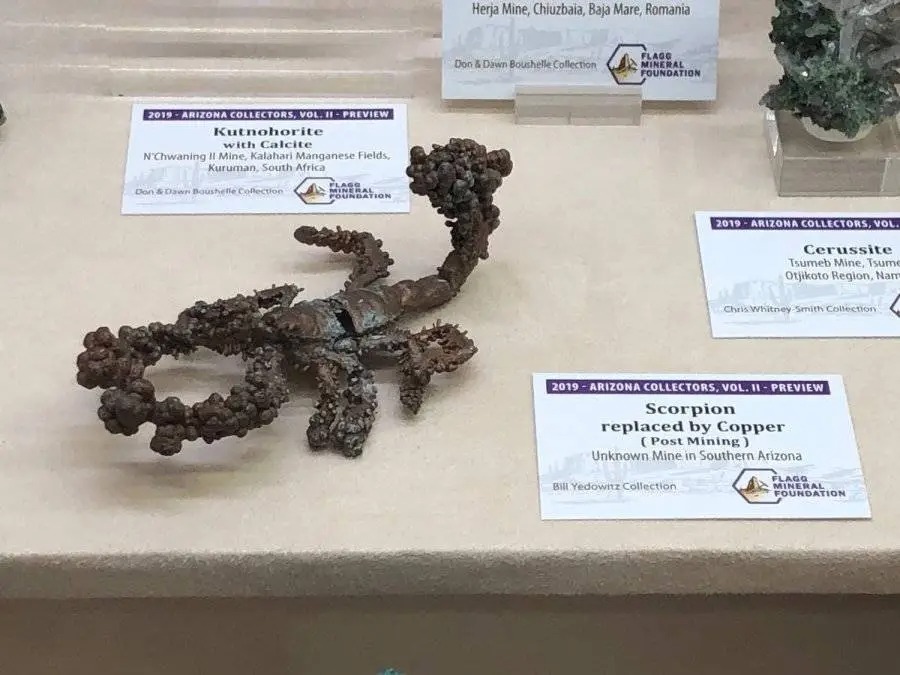
A copper scorpion discovered in an unidentified mine in Southern Arizona has left many people puzzled and amazed. The creature, on display at the 2019 Tucson Gem and Mineral Show, has turned into copper over time, prompting people to wonder how such a transformation could have occurred.

According to Tulane University, the phenomenon is called encrustation pseudomorphism. This occurs when a thin crust of a new mineral forms on the surface of an existing mineral, and the existing mineral is subsequently removed, leaving behind the new crust. The thin crust of the new mineral often retains the original mineral’s form, which is what happened in the case of the copper scorpion.
So how did the scorpion become copper? One possible explanation is that it was a very slow process. The scorpion may have become trapped in the rock and was subjected to fluids rich in copper, which deposited the metal as they evaporated. This process is similar to how petrified wood is created.
Another explanation has to do with primitive and inadequate copper smelting techniques. It’s possible that during the smelting process, liquid copper leaked and flowed through the rocks, eventually reaching the scorpion and encasing it in copper.

Regardless of the explanation, the copper scorpion is a truly remarkable specimen. Its transformation into copper has left many people marveling at the mysteries of the natural world and the ways in which even the most unexpected things can occur.

Leave a Reply